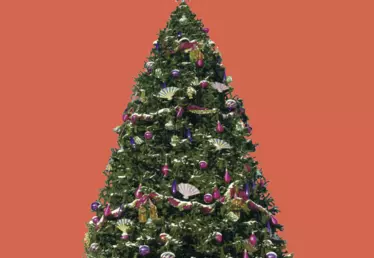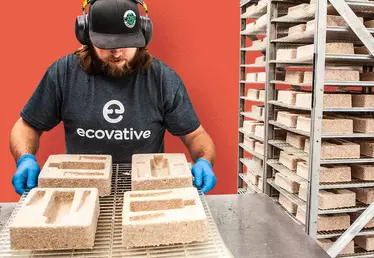

Hero banner custom title
The fashion world meets naturally dyed cotton in Peru
2 min
Red, blue, green, yellow... People like wearing colorful clothes – but few realize that 20% of global water pollution is caused both by the chemicals used to dye textiles and by the way they are processed. In the uplifting documentary River Blue, Orsola de Castro, co-founder of the Fashion Revolution movement, talks about “…a joke in China that you can recognise the color of a season by looking at the color of the rivers”. Not to mention certain health risks to textile workers and consumers alike.
The living world has, in actual fact, bountiful resources. One type found in Peru is a naturally colored wild cotton that can be used to make clothes without having to add any artificial dyes. This rare commodity grows in North Peru’s Amazon jungle, mainly in Lambayeque province, which is also the indigenous Mochica people’s ancestral land. Specialists from the Universidad Nacional Pedro Ruiz Gallo de Lambayeque are currently working to unravel the secrets of this special cotton variety – and to protect it from the ongoing expansion of corn and rice farming.
A natural wonder that could revolutionize fashion
According to Jean-Guillaume Thyere, founder of the Pitumarka brand that uses this uncolored cotton from Peru to make eco-responsible clothing, "The plant is easily 1,000 years old and has always grown by itself, watched over by indigenous peoples who have used it for cultural and even religious purposes. Paradoxically, the Peruvian government wanted to eradicate it. The reason being that is white cotton was selling better in the global markets. But it has remained under the protection of local populations who wanted to bequeath it to their children''.
Wild cotton also offers a very rich color palette – with scientists having identified around thirty different shades (ranging from creamy white to brown, beige, avocado green or lilac) - all of which could be influenced by genetic or climate factors.
In a video from the Food and Agriculture Organization(FAO), María Rosa Farroñán, an indigenous farmer and artisan, says : "My family has always sewn [wild cotton] for our own consumption. Once harvested, we would bring it here and choose the colors one by one” before handweaving the clothing they were making. Otherwise, Hecho Por Nosotros - a non-profit NGO with UN consultative status that promotes sustainability throughout the fashion industry – has noted on its website that, "This variety represents the doing of communities whose seeds and farming, harvesting and weaving practices have preserved ancestral secrets that are part of the heritage of humankind”.
Eco-responsible materials all down the line
In addition to the fact that the wild cotton requires no dyeing and therefore does not generate any water pollution, it has the advantage of being much less avaricious than its more conventional counterpart in terms of the water, pesticides and chemical fertilizers it needs. There are estimates, for example, that it takes 7,500 liters of water - or the equivalent of 50 bathtubs – just to make one pair of jeans. Peruvian wild cotton, on the other hand, does more than well with the relatively abundant rainfall it already receives. Not to mention the fact, as Thyere notes, that "It also helps to preserve other species since it grows best when surrounded by about fifty other plants”.
Undyed and 100% natural, end-of-life native cotton textile is also 100% compostable. This is particularly intriguing given that synthetic fibers can take hundreds of years to decompose in nature – and because most discarded clothing is not recycled but incinerated.
Wild cotton is rising from its ashes today because of the favorable impression it has made on the world of sustainable fashion. Already in 2006, the Lambayeque regional government officially designated the variety as a key component of local heritage. The Peruvian government would then go on to affirm it as part of the nation’s “genetic, ethnic and cultural heritage” – and to state its intention to safeguard, restore, preserve and promote wild cotton all across Peru.
Share it:












